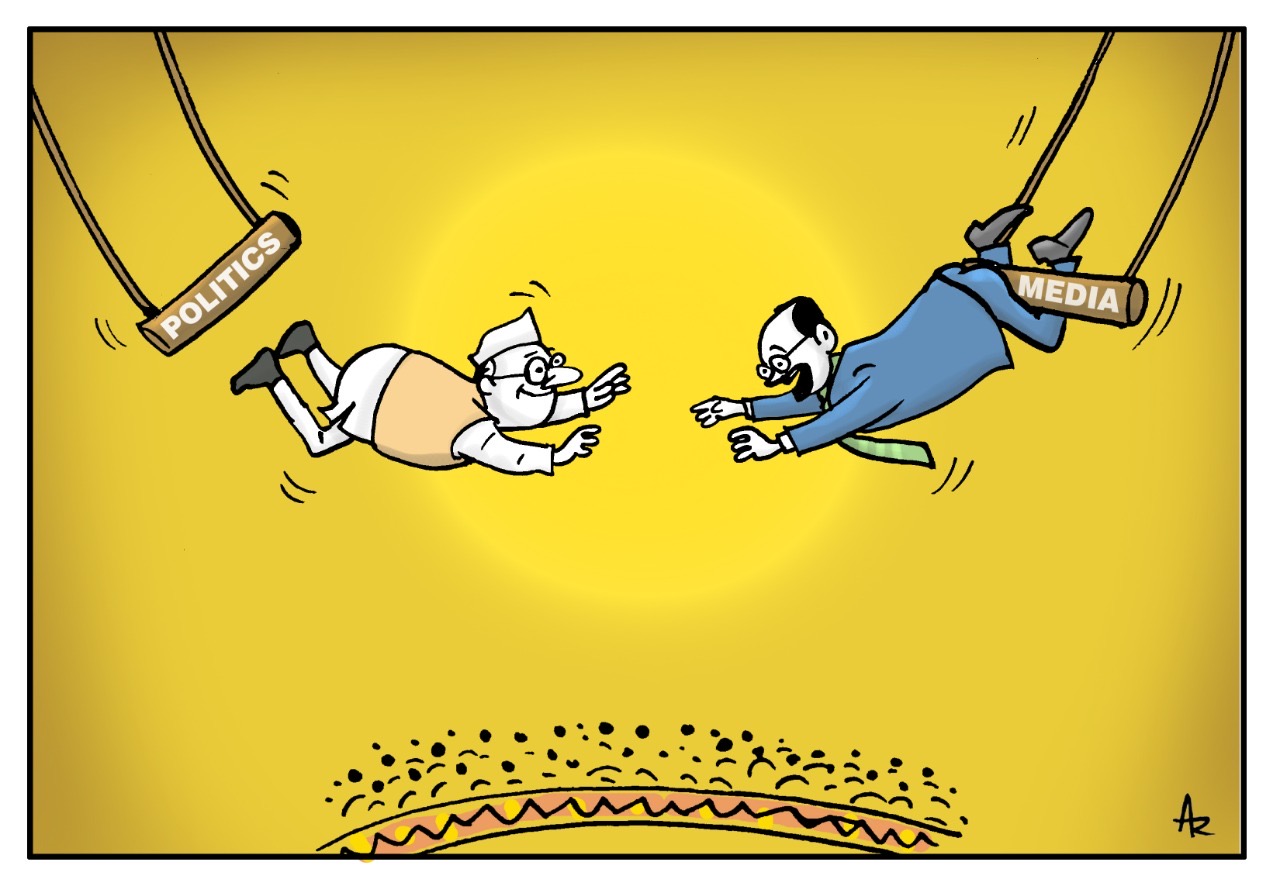
Politics and Media, an Undeniable Relationship
If we scrutinise the political scenario, there is always an invisible thread that connects politics and media. One cannot almost survive without the other. That demands harmony between both the entities. However, the recent episodes show that harmony is under threat. Everywhere, politicians and media are at loggerheads, and a few politicians have even opted for an extreme measure like boycotting media. Is that a solution? We believe the rift would only damage the image of a politician and the party he or she represents.
History shows that the future of a public figure is indirectly proportional to his or her approach towards the media. From pamphlets and newspapers to television channels and new media, the platform has played a crucial role in changing the way a nation thinks. There comes the significance of politicians maintaining a healthy relationship with the media for survival. There is no dispute over the fact that the primary duty of a public servant is to work for the betterment of society. However, in this changing time of media influx, it is essential that a politician should try to better his or her image.
How can one possibly build a constructive image using the media? There comes the significance of Public Relations.
Here are five Public Relations tools politicians can choose for image enhancement:
1.Right attitude: For a long time, the attitude of a politician had been associated with the attire. Not anymore. A good and clean dress alone cannot help a person win voters. The opinion of the third party also plays a key role in developing the career of a politician or a political party. That opinion is formed through the information delivered by the media. Hence, it is necessary to keep a straight and friendly attitude towards it. In fact, using media cleverly will help one uplift his/her image. Because the media would never get tired of politics. There is always a scope for stories.
2. Build a positive image: This is very important. If we check the current trend, political stories are mostly allegation-oriented. That has to change. Focus on building positive/ impact stories. Use media to communicate developmental activities in constituencies rather than sharing just ‘ceremonial photographs.’ Pay attention to issues the media point out and try to resolve them in a public-friendly way. At the end of the day, people count that. This can also be effectively used during election time. For instance, if there is a new candidate, use the platform to introduce the person or to emphasise the activities his/her party has done in the past.
3. Boycotting is not a solution: Stay media-friendly, even in tough situations. Then only one will be able to communicate well. When a negative story appears, do not feel targeted. Confront the issue gracefully. Boycotting a particular media will not solve an issue. It will only worsen the situation. Check the current trend, one can see that there exists a gap between media and politicians. That should be resolved.
4. Give response: Always give a response. Silence will give scope for speculations, which may ruin one’s career. Once the speculation is out, it is difficult to restore the image.
5.Study your subject well: Before giving a response, study the subject and situation thoroughly. Make sure one is updated about various issues that are happening around, especially before attending discussions. Think many times before speaking. That will save from delivering false or damaging statements.

